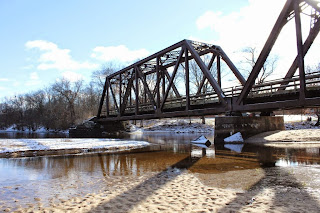 |
Under the Sourdough Rim:
A Midwestern |
Council Bluffs, Iowa, had seen its share of 'overlanders' since the great rush to gold in San Francisco had motivated men from around the planet to pick up stakes and travel, in any way possible, to
find the El Dorado at Sutter Mill near Coloma California. For those not willing to take the miserable route through South America and up around the Cape by ship, the trek over land was as trying. The jungles of the lower continent might have held malaria and sweltering heat, but the 'overlanders' encountered lack of any water, paths incomplete and which often lead to nothing more than animal trails, or Indian tribes so varying in degree of malice that every native had to be seen as danger before friend. The Watts
Boys had passed through one of the stop-over points along the Great Gold Rush Trail not on the way West, but back East where Major Shan Cordon waited with thirty-five of his finest high-plains men for the gold load the Boys had heisted from the
Golden Eagle, a ship thought to be deserted in San Francisco Bay, but was a stockpile instead of creek gold found at Yosemite flats. The Boys had feelers
all along the Trail, both ways, as a result of many promises they made out West of riches returning. They caught wind of Cordon's men and found their route north along the bluff lines until they reached the Mississippi, then north through Wisconsin to what had been a town famed by its sawmill and timber industry. The Boys, consisting of only nine, started as thirteen; all had healthy horses, three mules packing the gold, seven rifles between them, and each with at least one pistol, all as fresh as the day they were stolen. Rudy Watts, one of the namesake of the clan, third born, sickly, but certainly the meanest, had fallen ill before they had split from Council Bluffs north, and needed a hideout.

Old man Watts knew the country from scouting expeditions he had made as a boy with his uncle who served as surveyor for the Steamboat packets of the early days. The bluffs, he remembered, were tall and riddled with limestone fixtures perfect for small caves. One, in particular, stood out, down at the base of Sourdough Bluff. "Would you believe it, boys, uncle Prescott always said there was but one place to stop in Onalaskee, Wisconsin, that is the old brew caves of A. Knecht." This sounded a bit on the unbelievable side. Rudy here was sick with something in his guts that had him holding his lower side permanently, with the white fever and looked like he was dying, and here there was talk of a cave that was used for beer storage. This was the same kind of talk that found them cornered at the Bay back in San

Francisco by a crowd of forty-niners twice their number and which put them back out on the run for what looked like a lifetime instead of spending that seized gold right there at San Fran on the booze and impressing women. "Well, now, the ways I see it," said the elder Watts, we will most assuredly need a long term hole-up. There's the river and Canadee not far off north if need be in a bad pinch. For the time bein,' he said, we poke around in those caves we knows about and there will be the shelter, and yessir, it will be stocked with kegs of fine brew."


































